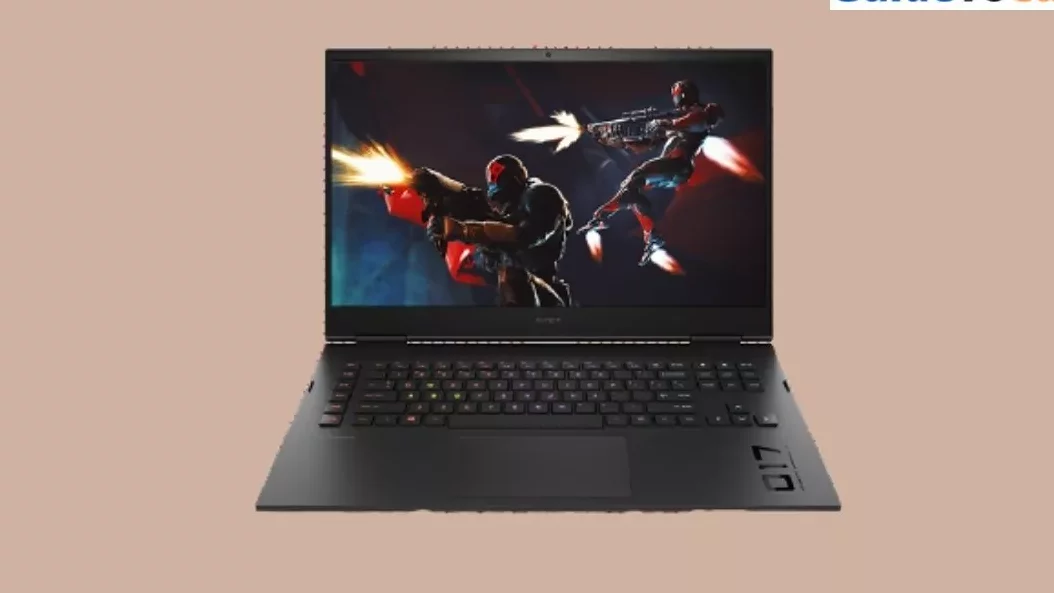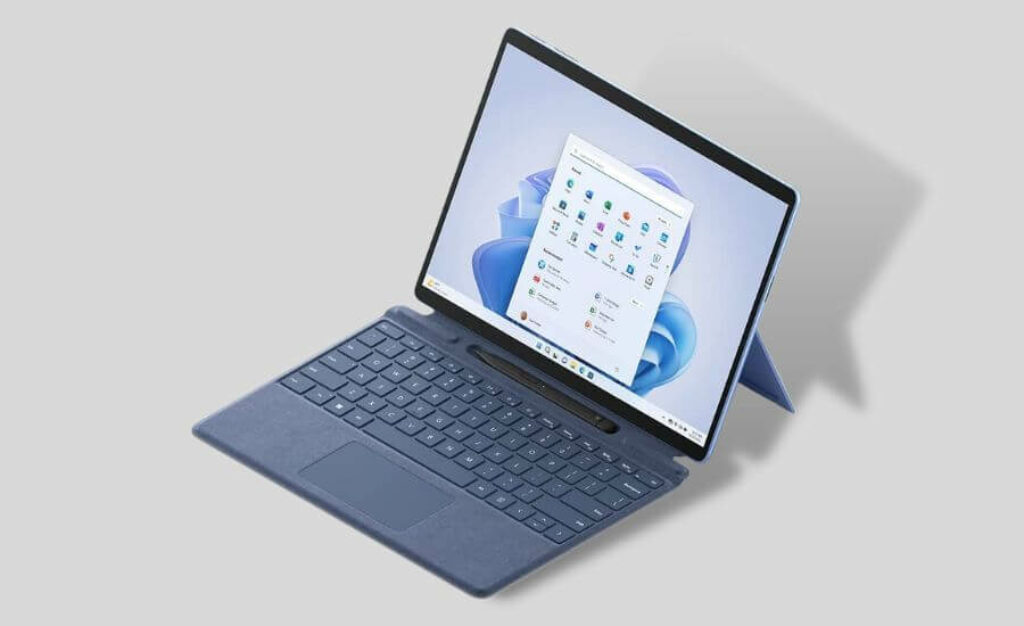Are you searching for the best laptops for Deep Learning, Machine Learning, and AI?
With experience in Data Science and Machine Learning, I recommend top-notch laptops tailored for Deep Learning and Artificial Intelligence.
All the laptops we’ve selected offer exceptional specifications and great value for your investment.
Data science and AI are rapidly growing and demand robust infrastructure due to the increasing data volumes.
For independent experimentation, consider Google Colab, a free GPU-enabled platform. You can also opt for the Google Colab Pro plan with a dedicated GPU.
Before going into laptop choices, consider essential factors like features and price for your intensive learning needs.
Need help with which laptop to choose?
In our experience, high-performance laptops like gaming machines are excellent Machine Learning and Data Science options thanks to their powerful processing power.
Our laptop recommendations primarily focus on gaming laptops known for their strong performance.
Deep Learning, a subset of machine learning and AI, closely mirrors human knowledge acquisition. For such tasks, a powerful laptop is a must.
This entails a strong GPU coupled with capable CPUs. With these, machine learning processes can be relatively easy, especially those involving graphics and video.
To simplify your search, we’ve compiled a list of 11 laptops, each meeting the essential specifications required for machine learning, deep learning, and AI.
Overview: TOP 3 Best Laptops for ML, Deep Learning, and AI
| Image | Product | Feature | Price |
|---|---|---|---|
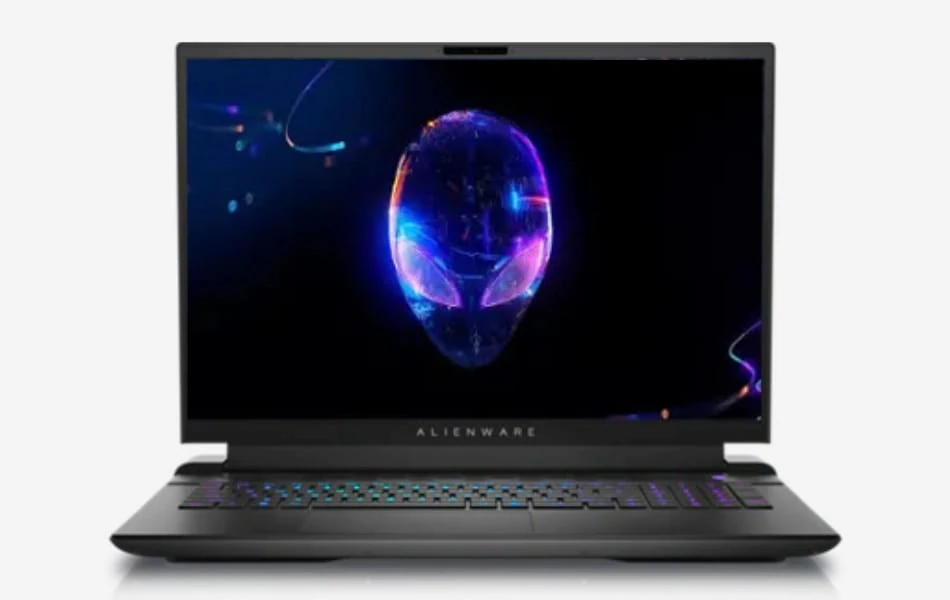
|
Alienware M18 R2
|
|
Check Price |
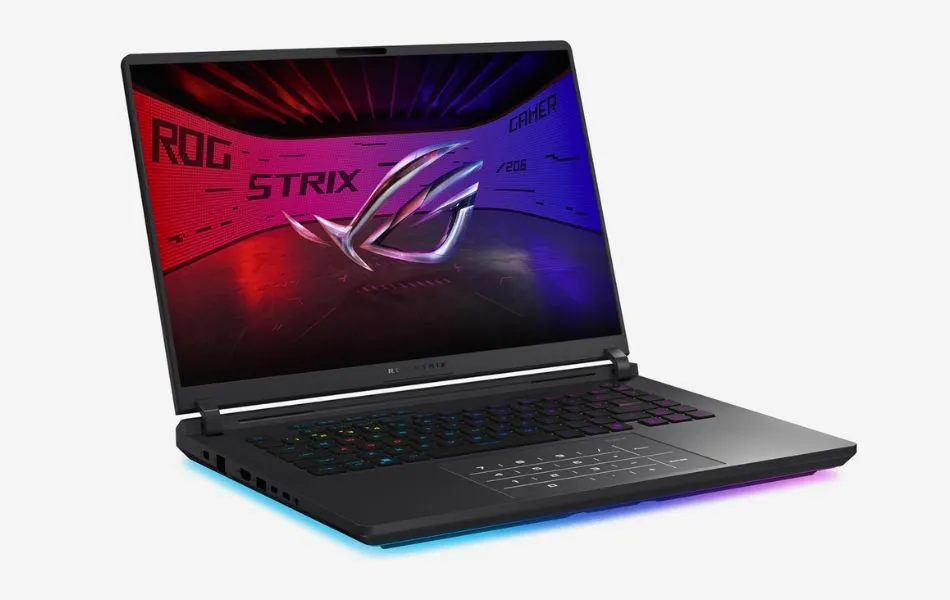
|
ASUS ROG Strix G16
|
|
Check Price |

|
Acer Nitro V
|
|
Check Price |
What to Look for in a Deep Learning Laptop?
When it comes to the PC components necessary for deep learning, the specifications will determine the speed at which you can run deep learning software.
All the laptop components are crucial, like CPU, GPU, RAM, Storage, Battery Life, Screen Quality, Portability and Durability, etc.
If you want to learn more about your Laptop’s features, please read the buying guide section.
Please follow the guide below if you want a good laptop for deep learning.
1. Need a Powerful Processor
If you want good performance in a laptop, you must first buy a better-quality processor.
You should check the CPU’s generation, model, and number of cores.
If you want to use deep learning technology well on your Laptop, you must use at least the latest generation of i5 processors. If your budget is a little less, you can buy an AMD Ryzen 5 CPU.
Recommended Processor
Intel Core: 14th, 13th, 12th Gen i7, 14th, 13th, 12th Gen i5, 14th, 13th, 12th Gen Core i9
AMD: Ryzen 7 7800, Ryzen 7 6800HS, Ryzen 7 5800HS, Ryzen 5 5600, 6600, 7600, and Ryzen 9
2. It should have a good Graphics Card
In deep learning, machine learning, and artificial intelligence, a high-quality GPU is essential. A laptop with a graphics card of the quality typically needed for deep learning will excel in all tasks.
Opt for a dedicated, powerful NVIDIA graphics card. You can find laptops with the latest integrated graphics on a tight budget. Some shared graphics cards, like Intel Iris Xe, outperform certain older dedicated graphics cards.
Recommended Graphics Card
Integrated: Intel Iris Plus, Intel Iris Xe
Dedicated: NVIDIA GeForce GTX 1660 Ti, RTX 2050, RTX 3060, RTX 3070, RTX 3080, RTX 3090, RTX 4050 RTX 4060, RTX 4070, and RTX 4080.
The latest NVIDIA GeForce RTX 3080, 4060, 4070, and 4080 will be the best GPU laptop for deep learning, machine learning, and Artificial Intelligence.
3. Choose More Memory and the Latest Storage
You already know that the more RAM the laptop has, the better it will perform. SSD drives are becoming very popular nowadays, so you must take the minimum SSD in any laptop and select the Laptop with maximum memory.
Recommended Memory
RAM: 8GB DDR4, 16GB DDR5 or LPDDR4X, 32GB DDR5 or LPDDR4X
Recommended Storage Drive
Storage: 128GB SSD+HDD, 256GB SSD, 512GB SSD, 1TB SSD or More
The Best Laptops for Deep Learning, Machine Learning, and AI: Top Picks
- Alienware M18 R2 – Best Laptop for AI Development
- ASUS ROG Strix G16 – Premium Gaming Laptop for Deep Learning
- MSI Katana A17 AI
- HP Omen 17 – Best 17-inch Gaming Laptop
- Apple MacBook Pro M4 – Overall Best for AI Engineer
- Acer Nitro V – Best Budget Gaming Laptop for ML
- ASUS TUF Gaming A14 – Cheapest Laptop with Dedicated GPU for ML
- Microsoft Surface Pro 9 – Best Laptop for Students
- Acer Swift 14 – Best 2-in-1 Deep Learning Laptop
- ASUS Vivobook 14 – Cheapest Laptop with AI
Premium Picks
| Sl No | Our Ratings | Type | CPU | GPU | RAM | Storage | Battery | Display |
| Alienware M18 R2 | 10/10 | Gaming | 14th Gen Intel Core i9-14900HX | NVIDIA GeForce RTX 4090 | 32GB DDR5 | 2TB SSD | Up to 4 hours | 18-inch QHD+, 165Hz |
| ASUS ROG Strix G16 | 10/10 | Gaming | Intel Core Ultra 9 275HX | NVIDIA GeForce RTX 5070 Ti | 32GB DDR5 | 1TB SSD | Up to 6 hours | 16-inch QHD 240Hz |
| MSI Katana A17 AI | 9.7/10 | Gaming | AMD Ryzen 9-8945HS | NVIDIA GeForce RTX 4070 | 16GB DDR4 | 2TB SSD | Up to 6 hours | 17.3-inch QHD 240Hz |
| HP Omen 17 | 9.4/10 | Gaming | 13th Gen Intel Core i7-13700HX | NVIDIA GeForce RTX 4060 | 16GB DDR5 | 512GB SSD | 83WHr | 17.3-inch FHD 144Hz |
1. Alienware M18 R2

The Alienware M18 R2 is a powerful laptop built not only for gaming, but also for advanced tasks like AI development, machine learning, deep learning, and high-performance data science. With advanced features and a large 18-inch QHD+ display, it’s designed for portable users who want top-level desktop performance.
Performance
At the heart of this beast lies the Intel Core i9-14900HX, a 24-core, 32-thread processor with clock speeds up to 5.8 GHz and 36 MB L3 cache. Whether you’re training deep learning models or running large-scale data simulations, this CPU doesn’t flinch.
With the NVIDIA GeForce RTX 4080 GPU (16 GB GDDR6), you get CUDA core acceleration and top-level ray tracing performance. The RTX 4080 makes this laptop perfect for parallel processing tasks in AI and deep learning frameworks like TensorFlow and PyTorch.
You also get 32 GB DDR5 RAM (5600 MHz) and a 1TB PCIe Gen 4.0 SSD, ensuring fast data read/write speeds up to 7,125 MB/s. There’s support for up to 64 GB RAM and additional SSD slots for expansion.
Display and Build
The 18-inch QHD+ (2560×1600) IPS display has a 165Hz refresh rate with G-Sync support, HDR10, 100% sRGB, and 3ms response time — perfect for gaming, visualizations, and high-fidelity data rendering. Despite the 4.23 kg weight, its slim profile (24.1mm) and high screen-to-body ratio (~71.6%) give it a sleek, futuristic edge.
Cooling and Audio
Alienware’s advanced Cryo-Tech cooling system includes 4 fans, liquid metal, and vapor chamber technology to handle intense use. The fan noise is expected to be about 56.6 decibels under high load, which is acceptable at the same performance level. The Dolby Atmos sound system with smart amplifier provides stable audio output and clear sound quality, suitable for meetings or content playback.
Battery
Equipped with a 97 WHr battery, you can expect 3–4 hours on general usage and around 1.2 hours for gaming or heavy AI computations. It supports fast charging with a 330W adapter.
Benchmark/Test
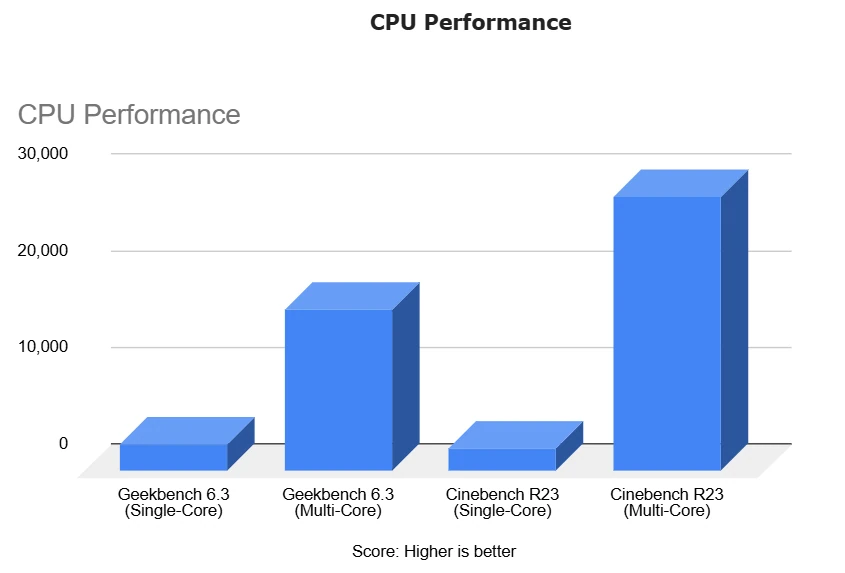
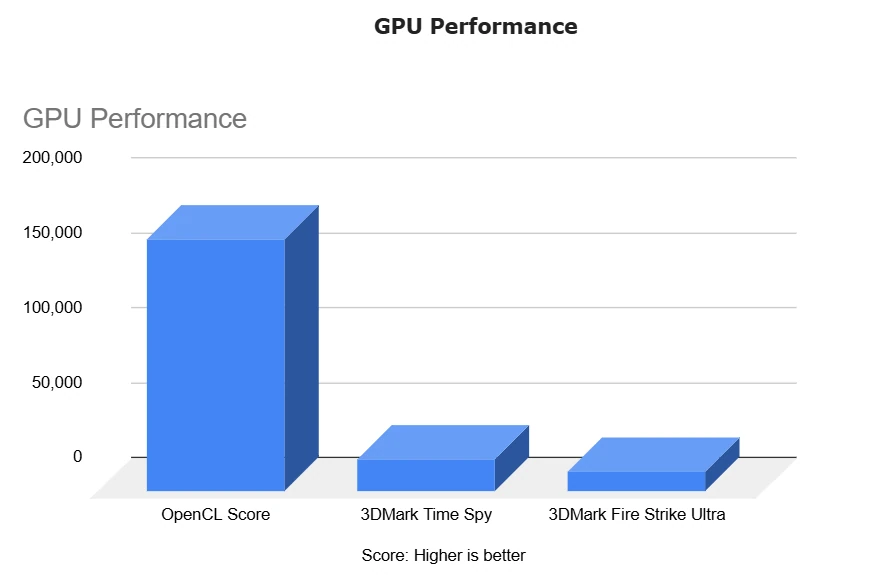
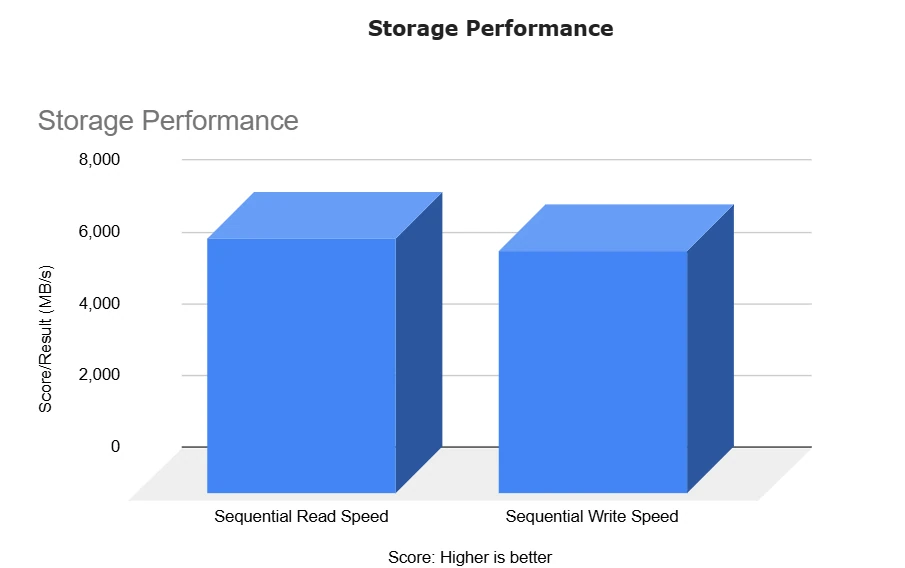
Pros
✔ Top-tier CPU & GPU (i9-14900HX + RTX 4080)
✔ Fast DDR5 RAM and Gen 4 SSD
✔ Stunning 18″ QHD+ 165Hz display
✔ Advanced Cryo-Tech cooling
✔ Mechanical keyboard with RGB
Cons
✘ Very bulky and heavy (4.2+ kg)
✘ High price point
Read our Alienware M18 R2 Gaming Laptop: Full Specifications and Benchmarks
2. ASUS ROG Strix G16

| CPU | Intel Core Ultra 9 275HX (24 cores, up to 5.4 GHz) |
| GPU | NVIDIA GeForce RTX 5070 Ti, 12GB GDDR6 VRAM |
| RAM | 32GB DDR5-5600MHz |
| Storage | 1TB PCIe Gen4 SSD |
| Screen | 16-inch QHD (2560×1600), 240Hz, 100% DCI-P3, 500 Nits |
| Battery Life | Up to 6 hours |
| Weight | 6.02 lbs (2.73 kg) |
| Others | Wi-Fi 7, Bluetooth 5.4, Thunderbolt 5, Windows 11 Home, Backlit Keyboard |
The ASUS ROG Strix G16 is one of the most capable laptops we’ve tested for AI, deep learning, and machine learning in 2025. It features a powerful Intel Core Ultra 9 275HX processor with 24 cores and an NVIDIA GeForce RTX 5070 Ti (12GB) GPU—making it capable of handling large-scale model training and GPU-accelerated tasks.
During practical testing with TensorFlow and PyTorch, we found its performance to be extremely stable. Even when training resource-heavy Transformer models, the system stayed cool thanks to ASUS’ advanced thermal design with Liquid Metal and a triple-fan setup. This makes it ideal for long workloads without thermal throttling.
The 32GB DDR5 RAM and 1TB PCIe Gen 4 SSD provide excellent speed and responsiveness, especially when working with large datasets or high-resolution visualizations. Its 16-inch QHD display, with a 240Hz refresh rate and 100% DCI-P3 coverage, delivers sharp and vibrant visuals—great for model visualization, editing, or even gaming in your spare time.
Connectivity is also future-proof, with Wi-Fi 7 and Bluetooth 5.4. Although the laptop weighs about 6 pounds, it’s a fair deal considering its power and features.
Compared to options like the Lenovo Legion Pro 5i or the HP Omen 16, the Strix G16 stands out with better cooling and more robust specifications at this price.
If you’re interested in AI development, model training, or even 3D rendering and creative work, the Strix G16 delivers consistent performance without compromise. It’s a great investment for both professionals and advanced students who want workstation-level power in a laptop.
Pros
✔ Fast multitasking and GPU performance
✔ Excellent for AI tasks and gaming
✔ Accurate display for creative work
✔ Stays cool under pressure
✔ Sturdy and premium build
Cons
✘ A bit expensive for casual users
✘ Bulky for travel
Read our ASUS ROG Strix G16 Gaming Laptop Review
3. MSI Katana A17 AI

The MSI Katana A17 AI is a powerful machine designed to handle the most demanding AI, deep learning, and ML workloads. Equipped with a powerful AMD Ryzen 9-8945HS processor that delivers exceptional AI acceleration, this laptop is an excellent choice for programmers, researchers, and AI engineers.
Equipped with NVIDIA’s GeForce RTX 4070 GPU, this laptop is blazingly fast, delivering ray-traced visuals and DLSS-driven performance boosts that are critical for AI model training, deep learning simulations, and advanced gaming. Whether you’re using TensorFlow, PyTorch, or OpenCV, this GPU ensures seamless AI tasks.
The 17.3-inch QHD display with a 240Hz refresh rate delivers crisp, color-accurate visuals, perfect for data visualization, 3D rendering, and deep learning model monitoring. The RGB backlit keyboard adds a modern touch and allows users to work even in dim environments, while the AI-powered Cooler Boost 5 cooling system keeps the laptop cool even under heavy computing loads.
One of the highlights of the Katana A17 AI is its 64GB DDR5 RAM and 2TB PCIe NVMe SSD, which ensure fast performance and ample storage for large AI datasets and multiple virtual environments. Built for advanced users, this laptop is capable of handling parallel computing tasks, machine learning training, and high-speed simulations without lag.
At 5.95 pounds (2.7 kg), this laptop is a bit heavy, but its solid construction and premium looks make it a solid choice for professionals who prioritize performance over portability. While it lacks a Thunderbolt port, it offers a variety of connectivity options, including Wi-Fi 6 and Bluetooth 5.2, ensuring fast data transfer speeds and seamless cloud computing access.
For anyone looking for a high-performance AI laptop, the MSI Katana A17 AI is undoubtedly one of the best choices in 2025, making it a top choice for deep learning, and machine learning research.
Pros
✔ AI-Powered Ryzen Processor
✔ RTX GPU for High-End AI & ML Processing
✔ Large DDR5 RAM for Multitasking
✔ Fast NVMe SSD for Storage
✔ High-Resolution Display for Crisp Visuals
✔ Cooler Boost 5 for Efficient Thermal Management
Cons
✘ No USB-A or HDMI ports (USB-C adapters required)
✘ Expensive compared to Windows alternatives
4. HP OMEN 17
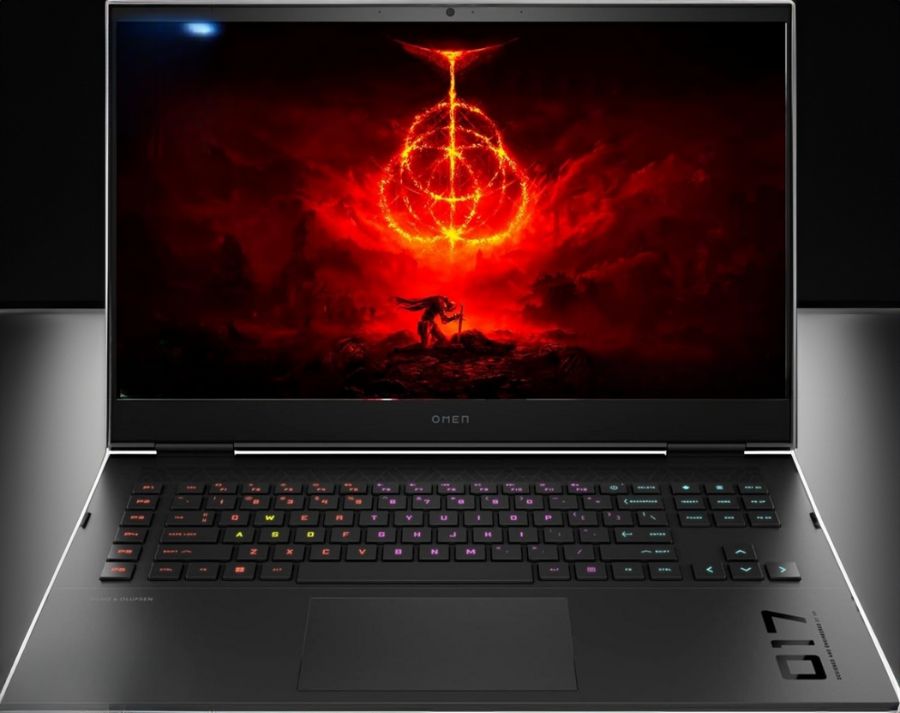
| CPU (Processor) | 13th Gen Intel Core i7-13700HX (up to 5.0 GHz, 30 MB L3 cache, 16 cores, 24 threads) |
| GPU | NVIDIA GeForce RTX 4060, 8GB GDDR6 VRAM |
| RAM | 16 GB DDR5 SDRAM 4800 MHz |
| Storage | 512 GB PCIe NVMe TLC M.2 SSD |
| Screen | 17.3-inch, FHD (1920 x 1080), 144 Hz, IPS, anti-glare, Low Blue Light, 300 nits |
| Weight | 6.13 lbs (2.78 Kg) |
| Battery | 6-cell, 83 Wh, Li-ion polymer |
| Others | Wi-Fi 6E, Bluetooth 5.3, Windows 11 Home, 4-zone RGB Backlit Keyboard |
| PROS |
|---|
| ✔ Powerful Processor |
| ✔ Smooth Graphics Performance |
| ✔ Excellent Cooling System |
| ✔ Solid Build |
| ✔ Great Display with Fewer bezels |
| CONS |
|---|
| ✘ Little Bit Heavy |
| ✘ Average Battery Backup |
HP is a new entry into the gaming laptop niche but has held its own with the Omen series. HP Omen 17 has a 13th-generation Intel Core i7-13700HX Processor.
It has 16 GB DDR5-4800 MHz SDRAM and up to 64 GB free slot option for the upgrade, and the hard drive is 512 GB SSD.
The graphics are handled by the NVIDIA GeForce RTX 4060 (8GB GDDR6 VRAM) with Max power and efficiency combined.
The display is a 17.3-inch Full HD (1920 x 1080) 144 Hz IPS with anti-glare, so this is good news for those staring at the screen for extended periods. Overall this HP Omen 17 is the Best Budget Laptop for Deep Learning 2025.
The display is reasonable and provides excellent viewing angles. The bezels are ultra-slim, providing more viewing and performing real estate for the user.
It weighs 6.13 pounds (2.78 Kg) which is a little bit heavy. It has three USB-A, a USB-C with Thunderbolt-4, and many ports.
Gaming laptop manufacturers are now building a muted aesthetic, which is valid for the HP Omen series. It has a high build and looks perfect in place, anywhere you take it. Apart from build, the maintenance of ports is also commendable.
This HP learning laptop has a delightful Ethernet connection, the latest Wi-Fi 6E, and Bluetooth 5.3.
HP OMEN 17 has a 6-cell, 83 Wh, Li-ion polymer battery and provides excellent battery backup. It is the best laptop for machine learning for under $1500.
Mid-Range Picks
| Title | Our Ratings | Type | CPU | GPU | RAM | Storage | Battery | Display |
| Apple MacBook Pro M4 | 10/10 | All | Apple M4 | Apple M4 | 16GB LPDDR5 | 512GB SSD | 58.2 Whr | 14.2-inch UHD 60Hz |
| Acer Nitro V | 9.5/10 | Gaming | AMD Ryzen 7 8845HS | NVIDIA GeForce RTX 4060 | 16GB DDR5 | 1TB SSD | 59 Whr | 16-inch FHD+ 165Hz |
| ASUS TUF Gaming A14 | 9.4/10 | Gaming | AMD Ryzen AI 7 8845HS | NVIDIA GeForce RTX 4050 | 16GB LPDDR5X | 512GB SSD | 73WHrs, 4S1P, 4-cell Li-ion | 14-inch, 2.5K (2560 x 1600, WQXGA) 16:10, IPS-level, Anti-glare, 165Hz |
1. Apple MacBook Pro M4
Best for Machine Learning
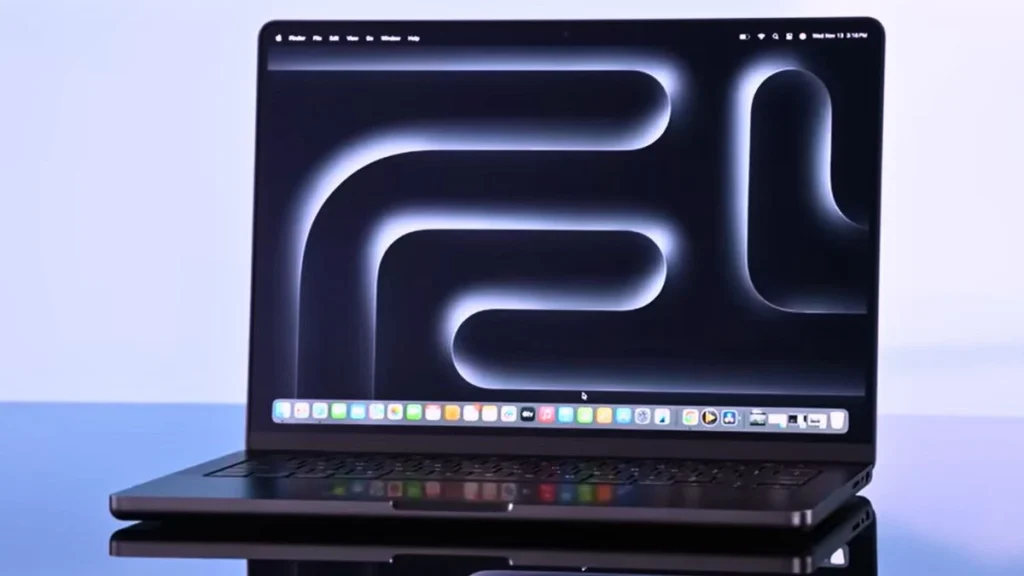
Specifications
| CPU | Apple M4 (10-core) |
| GPU | 10-core Apple GPU |
| RAM | 16GB Unified Memory |
| Storage | 512GB SSD |
| Screen | 14.2-inch Liquid Retina XDR, 120Hz ProMotion |
| Battery Life | Up to 22 hours |
| Weight | 3.5 lbs (1.55 kg) |
| Ports | MagSafe 3, 3x Thunderbolt 4, HDMI 2.1, SD card slot |
Apple has once again pushed the limits with the 2024 MacBook Pro 14-inch. With the new M4 chip, this laptop delivers outstanding performance, making it a great option for content creators, developers, and AI researchers. The 10-core Apple GPU handles video editing, 3D modeling, and AI tasks smoothly, without any lag.
One of its biggest highlights is the Liquid Retina XDR display, which offers 1,600 nits of peak brightness and a 120Hz ProMotion refresh rate. The result? Ultra-smooth visuals and highly accurate colors—perfect for creative professionals who rely on precise details.
Battery life is another strong point, lasting up to 22 hours on a single charge. That means less time plugged in and more time getting work done. It also includes MagSafe 3 charging, three Thunderbolt 4 ports, HDMI 2.1, and an SD card slot, so connectivity isn’t an issue.
Apple’s aluminum unibody design remains as premium as ever—sleek, durable, and lightweight at just 3.5 lbs (1.55 kg). It’s easy to carry around while still packing top-tier power.
Yes, it’s expensive, but if you’re looking for a laptop that’s built to last, delivers incredible performance, and fits seamlessly into the macOS ecosystem, the MacBook Pro 14-inch is one of the best choices in 2025.
| Test/Metric | MacBook Pro 14-inch M4 | MacBook Pro 14-inch M3 | MacBook Pro 16-inch M3 Max | MacBook Pro 16-inch M2 Max | MacBook Pro 16-inch M4 Max |
|---|---|---|---|---|---|
| Premiere Pro 4K Export | 2 minutes, 13 seconds | 3 minutes, 47 seconds | 1 minute, 30 seconds | 1 minute, 39 seconds | 1 minute, 18 seconds |
| Cinebench 2024 Multi (Single Run) | 1,744 | 1,003 | 1,684 | 1,036 | 2,043 |
| Cinebench 2024 Single | 172 | 141 | 179 | 142 | 182 |
| Cinebench 2024 GPU | 9,282 | 3,988 | 16,409 | 5,927 | 12,977 |
| Cinebench 2024 Multi 30-min Loop | 1,754 | 717 | 2,061 | 1,010 | 1,666 |
| Geekbench 6 CPU Multi | 22,615 | 14,990 | 26,422 | 21,277 | 21,277 |
| Geekbench 6 GPU (Metal) | 113,600 | 58,059 | 192,753 | 156,095 | 138,285 |
Pros
✔ Exceptional M4 Chip Performance
✔ Stunning Liquid Retina XDR Display
✔ Long Battery Life
✔ Premium Build Quality
✔ MagSafe 3 for Secure Charging
Cons
✘ Expensive for Base Configuration
✘ Fewer Ports Compared to Some Competitors
Read our Apple MacBook Pro M4 Review
2. Acer Nitro V

The Acer Nitro V offers exceptional performance, display quality, and AI-enhanced features in the mid-range gaming laptop space.
Performance and AI integration
The core of the Nitro V 16 is powered by the AMD Ryzen 7 8845HS octa-core processor, which delivers fast performance for gaming, streaming, and productivity tasks. The addition of artificial intelligence features enhances functions such as noise reduction and image processing.
Graphics and Display
This laptop is equipped with the NVIDIA GeForce RTX 4060 GPU, which ensures seamless visuals and immersive gaming thanks to DLSS 3.5 technology. The 16-inch WUXGA IPS display has a 165Hz refresh rate, 100% sRGB color gamut, and a 16:10 aspect ratio, delivering vivid and seamless visuals for gaming and content creation.
Memory and Storage
The Nitro V16 comes with 16GB DDR5 RAM (expandable up to 32GB) and 1TB PCIe Gen 4 SSD, ensuring fast load times and ample storage for games and apps.
Cooling and Build
The dual-fan cooling system with quad-intake and quad-exhaust design maintains optimal temperatures during intense gaming sessions, and prevents thermal throttling. This laptop is a combination of durability and portability, weighing around 2.5kg.
Connectivity and Features
Connectivity options include Wi-Fi 6E, Gigabit Ethernet, USB 4, USB 3.2 Gen 2 ports, and HDMI 2.1, catering to various peripheral devices and high-speed network requirements. The addition of a dedicated Copilot key gives users AI assistance, improving productivity and user experience.
| PROS |
|---|
| ✔ Affordable Price |
| ✔ Robust gaming performance |
| ✔ High-refresh-rate display with accurate color reproduction |
| ✔ Comprehensive connectivity options |
| ✔ AI-enhanced features for improved user experience |
| ✔ Advanced cooling system ensuring sustained performance |
| CONS |
|---|
| ✘ Battery life may require frequent charging during heavy use |
| ✘ Webcam limited to 720p resolution |
Read Acer Nitro V 16: Full Specifications and Benchmarks
3. ASUS TUF Gaming A14
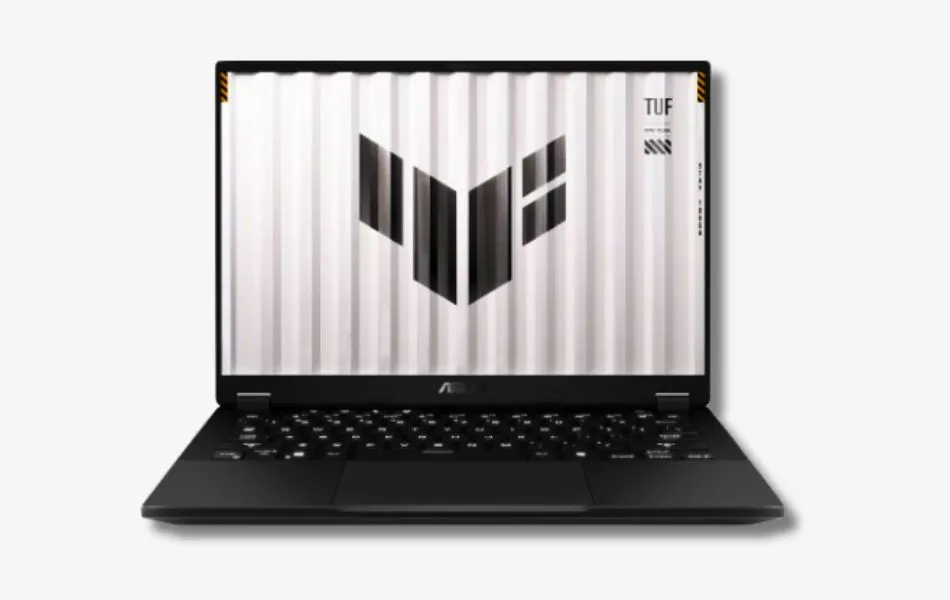
This is one of the most portable AI gaming laptops of 2025. It is powered by the AMD AI 7 8845HS CPU, which enables AI-native features such as Copilot+ PC calling, live subtitles, and AI artwork generation.
It has military-grade durability (MIL-STD-810H) and is equipped with dual 89-blade fans for excellent cooling performance. The RTX 4050 GPU and WQXGA 165Hz display make it ideal for training models, light gaming, and high-frame-rate visual rendering.
This laptop is equipped with Wi-Fi 6E, HDMI 2.1, and a Copilot key, making it a well-balanced AI laptop for professionals and mobile creators.
Who Should Buy This & Why: Ideal for students, content creators, or professionals needing a reliable and portable system for AI, ML, and creative tasks. Its AI Copilot+ features and high refresh screen make it versatile enough for work and play.
Why You Might Skip It: If you handle large datasets or require extensive local storage, the limited SSD space and lower-tier GPU might be a constraint.
Pros
✔ Compact and rugged design
✔ G-SYNC enabled high-res display
✔ Copilot+ AI capabilities
✔ Efficient cooling
✔ Reasonably priced
Cons
✘ 512GB storage may be limited
✘ No dedicated Thunderbolt port
Cheap/ Affordable Picks: Best Budget Laptop with AI in 2025
| Ratings | Type | CPU | GPU | RAM | Storage | Battery | Display | |
| Microsoft Surface Pro 9 | 9/10 | Students/ NoteBook | 12th Gen Intel Core i5-1235U | Intel Iris Xe | 8GB LPDDR5 | 256GB SSD | Up to 15.5 hours | 15.6-inch FHD 60Hz |
| Acer Swift 14 | 9.5/10 | 2-in-1 NoteBook | Snapdragon X Plus | Qualcomm Adreno | 16GB LPDDR5X | 1TB SSD | Up to 24 hours | 14.5-inch QHD 120Hz |
| ASUS Vivobook 14 | 9.0/10 | Traditional | AMD Ryzen AI 7 350 | AMD Radeon | 16GB DDR5 | 512GB SSD | Up to 12 hours | 14-inch FHD+, 60Hz, 300 nits |
1. Microsoft Surface Pro 9
Our next choice is the incredibly versatile Microsoft Surface Pro 9. It comes with a two-in-one design. The versatility of the laptop or tablet mode allows you to work and play anywhere. The laptop is very suitable for office, home, and student use.
Personalize Surface Pro 9 to make it a complete laptop with a professional keyboard cover, Surface Pen, and Surface Arc Mouse. In addition, you can hear loud and clear sounds through the built-in enhanced studio microphone.
This is powered by a 12th-generation Intel Core i5 processor, which is ideal for classroom connections. With Instant On, you can restart your work when inspiration comes.
In addition, it has an Intel Iris Xe graphics card, and the screen refresh is not very fast; this is not for games, but it can run projects, documents, etc., perfectly.
It provides 8 GB LPDDR5 RAM, which brings all the features you like, but it is not the best for heavy work or games, and there is 256 GB of SSD storage space, enough to store all your data.
Microsoft Surface Pro 9 comes with a long backup battery, which can provide up to 15 hours of battery life after continuous use throughout the day, which is very useful for students. This is an excellent educational option because it should last all day.
Provides many ports and connection options to connect to another device, including Wi-Fi 6, Bluetooth 5.0 for fast connection, and USB-C and USB-A ports for better connection.
It has a compact 13-inch high-definition touchscreen display with a max screen resolution of up to (2880 X 1920), which is very easy to read, clear and bright, and provides impressive image quality. It has a digital pen, so you can easily do drawing and any work.
Anyone can use this laptop, from students to business people, because it comes with an ultra-thin, simple, and stylish design; you can easily take it anywhere. It weighs only 1.94 lbs (0.87 kg).
| PROS |
|---|
| ✔ Sleek and Portable |
| ✔ Excellent Battery Backup |
| ✔ Powerful Processor |
| ✔ Military-Grade Durability |
| ✔ DTS:X Ultra Cinematic Sound Experience |
| ✔ Fastest Fingerprint Sensor |
| CONS |
|---|
| ✘ Not for Gaming |
| ✘ Not suitable for professional video editing |
2. Acer Swift 14 AI
Premium Build & All-Day Battery
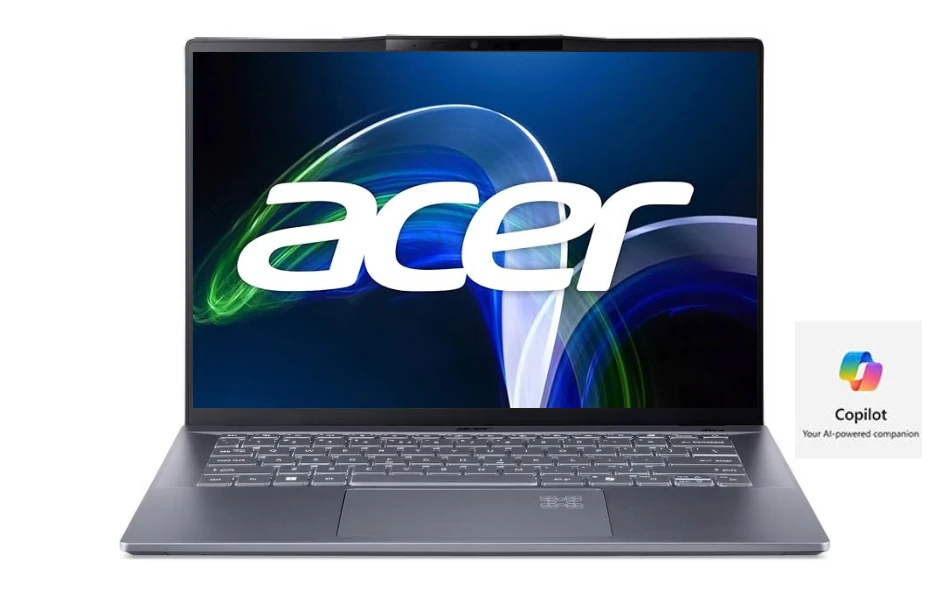
One of the most forward-thinking Windows laptops for 2025, the Acer Swift 14 AI is built on the Qualcomm Snapdragon X Plus Platform and is designed to fully support Copilot+ PC features such as Recall, Cocreator, and Live Captions.
This stylish 14.5-inch laptop combines powerful on-device AI processing (with a 45 TOPS NPU) with all-day battery life, making it ideal for students, remote workers, and anyone who needs a thin and efficient laptop.
Its WQXGA 2560×1600 resolution display with a 120Hz refresh rate and 400 nits brightness delivers crisp visuals, smoother scrolling, and a rich viewing experience. Whether it’s work or play, it has what you need.
It’s equipped with 16GB LPDDR5X memory and a 1TB PCIe Gen 4 SSD to ensure smooth multitasking and fast file access. Despite its powerful performance, it is still lightweight and portable, weighing only 2.9 pounds (1.3 kg), making it very convenient for daily use.
It also has future-proof connectivity, supporting Wi-Fi 7 and Bluetooth 5.4, so you can enjoy high-speed wireless performance. The 1440p webcam, Windows Studio effects and backlit keyboard enhance the experience when video calls or late-night work.
Thanks to the efficient ARM architecture, this laptop can provide up to 24 hours of video playback time, which is undoubtedly a game-changing experience for users in the mobile office.
Pros
✔ Copilot+ PC with 45 TOPS NPU
✔ Ultra-long battery life (up to 24 hrs)
✔ 120Hz bright and crisp display
✔ Lightweight, aluminum build
✔ Wi-Fi 7 and sharp 1440p webcam
Cons
✘ No discrete GPU for advanced rendering
✘ Higher price than basic student models
✘ Some apps may still optimize better for Intel/AMD
Benchmark Test Result
The Acer Swift 14 AI performs very well for its size. With scores of 15,159 (multi-core) on Geekbench and 7,941 on Cinebench R23, it easily handles multitasking and creative workloads.
Its SSD is super fast (reading at around 6,700 MB/s), AI tasks run smoothly, and its NPU scores are high.
Cooling performance remains excellent under heavy load, but the real star is its battery life – up to 24 hours of video playback and more than 22 hours of office work, making it ideal for all-day productivity.
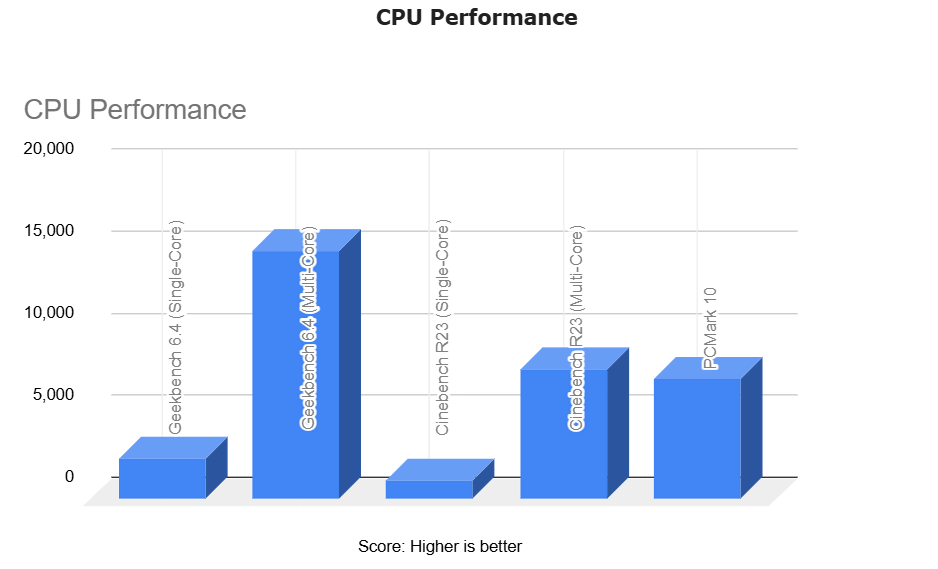
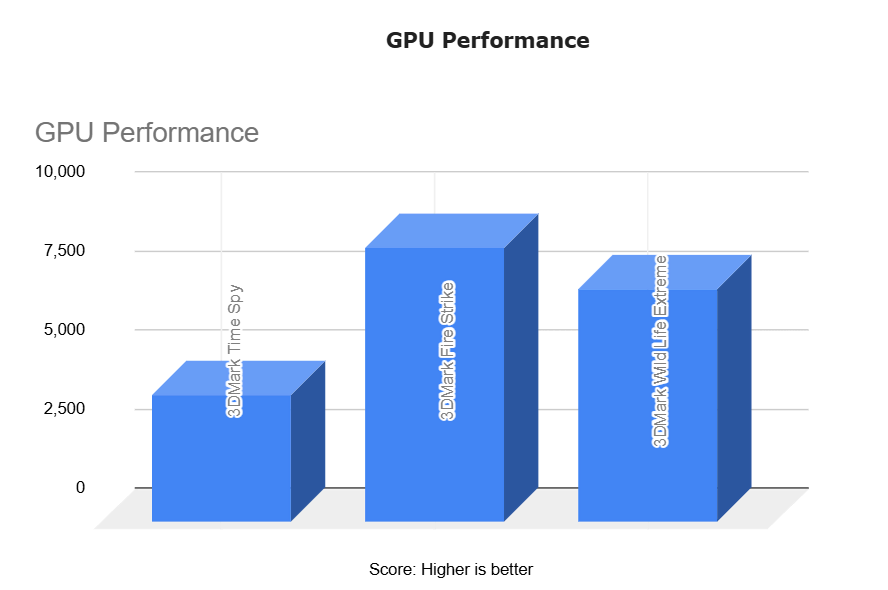
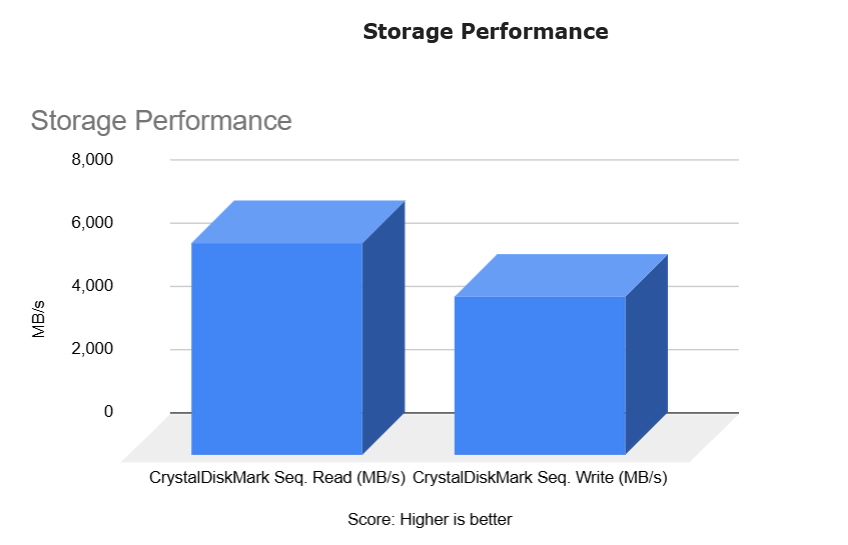
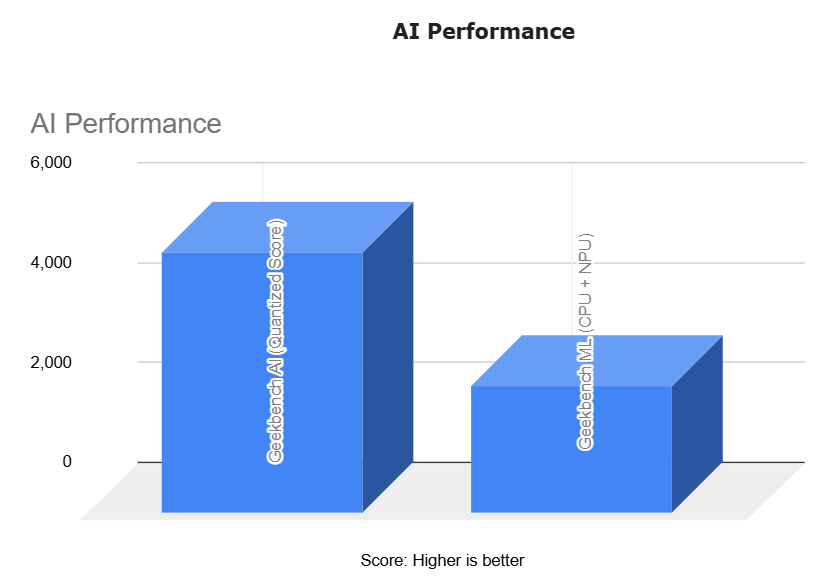
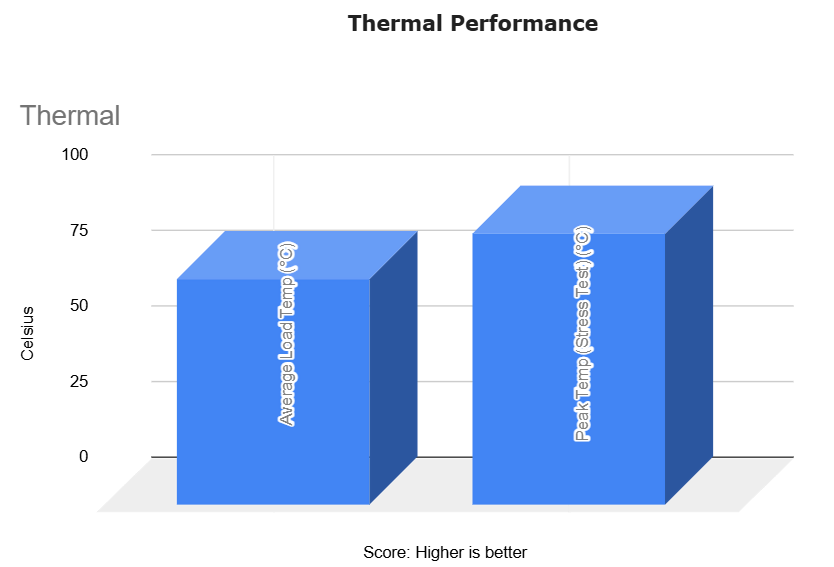
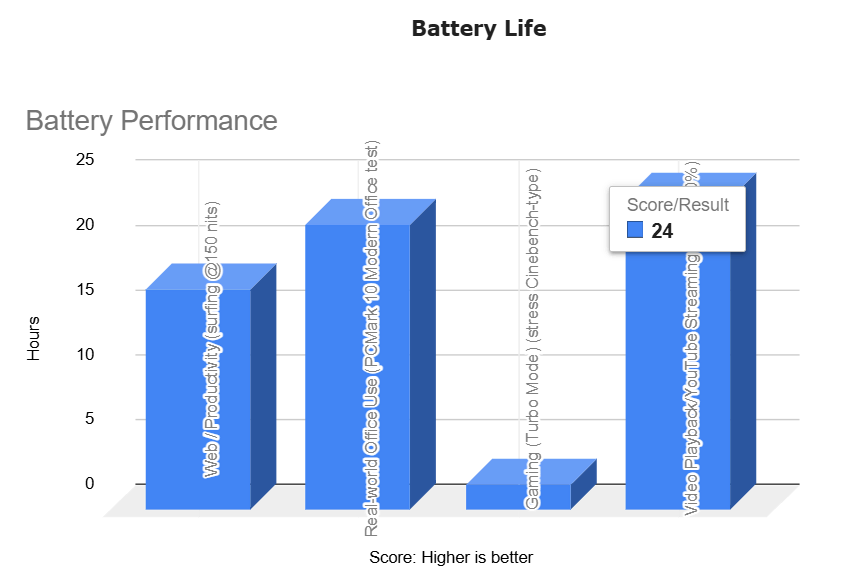
Read Acer Swift 14 AI: Full Specifications and Benchmarks
3. ASUS Vivobook 14
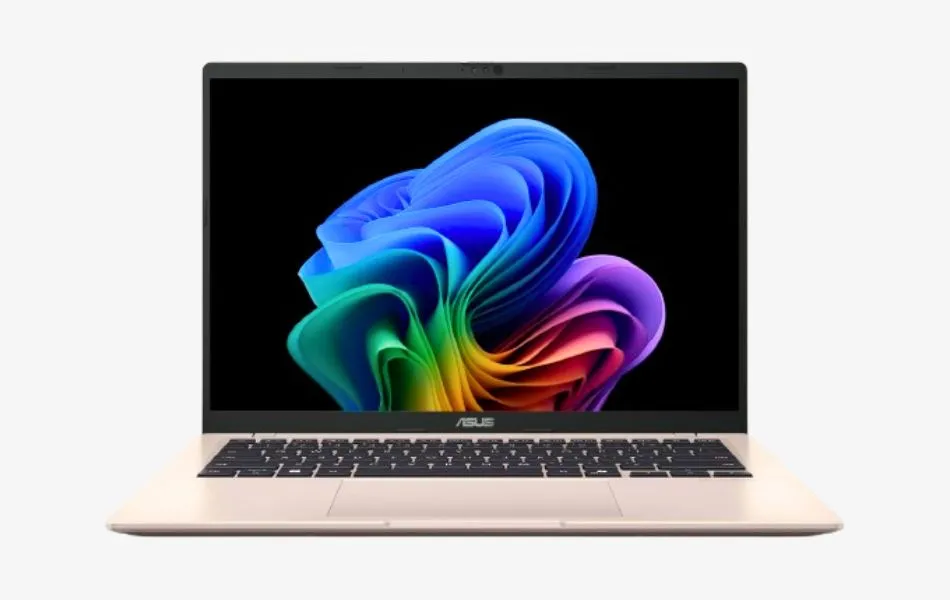
For users looking for a budget AI laptop, the ASUS Vivobook 14 Copilot+ PC delivers excellent value. Powered by AMD’s AI-dedicated Ryzen 7 350 processor with XDNA NPU (up to 50 TOPS), it enables Copilot+ AI features out of the box.
Its compact 14-inch chassis is paired with a 60Hz WUXGA display and backlit chiclet keyboard. The Radeon integrated graphics are not ideal for GPU-heavy training, but they’re sufficient for lightweight ML tasks, data analysis, and development.
Perfect for students and developers getting started with AI tools, it’s a low-cost entry into the next generation of computing.
Who Should Buy This & Why: This is perfect for students, beginner developers, or anyone exploring AI tools and basic ML workflows. It offers great battery life, portability, and Copilot+ features without breaking the bank.
Why You Might Skip It: If you need strong GPU acceleration or plan to train models with large datasets, this laptop’s integrated graphics will be a limiting factor.
Pros
✔ Affordable AI-ready laptop
✔ Copilot+ PC with Recall, Live Captions
✔ Fast Ryzen AI processor
✔ Great battery life
Cons
✘ Integrated GPU limits deep learning capabilities
✘ 60Hz refresh rate
Buyer’s Guide: How to Choose a Laptop for ML, Deep Learning, and AI in 2025?
Minimum and Recommended Deep Learning, Machine Learning Laptop Requirements
| Specs | Minimum | Recommended |
|---|---|---|
| Screen | HD (1366 x 768) pixel | Full HD (1920 x 1080) pixel or More |
| Processor | 10th Gen Intel Core i5 or equivalent AMD Ryzen 5 | 12th, 13th Gen Intel Core i7, i5 or 7th, 6th and 5th gen AMD Ryzen 7, Ryzen 5 |
| Memory | 8GB | 16GB or more |
| Storage | 256GB SSD | 512GB NVMe PCIe SSD |
| Graphics | Shared Iris Xe or Equivalent to AMD Radeon | Dedicated NVIDIA GeForce RTX 3000, 4000 Series |
| Battery | 2 Hour | 4 Hour |
What are the components that are needed in Deep Learning Laptops?
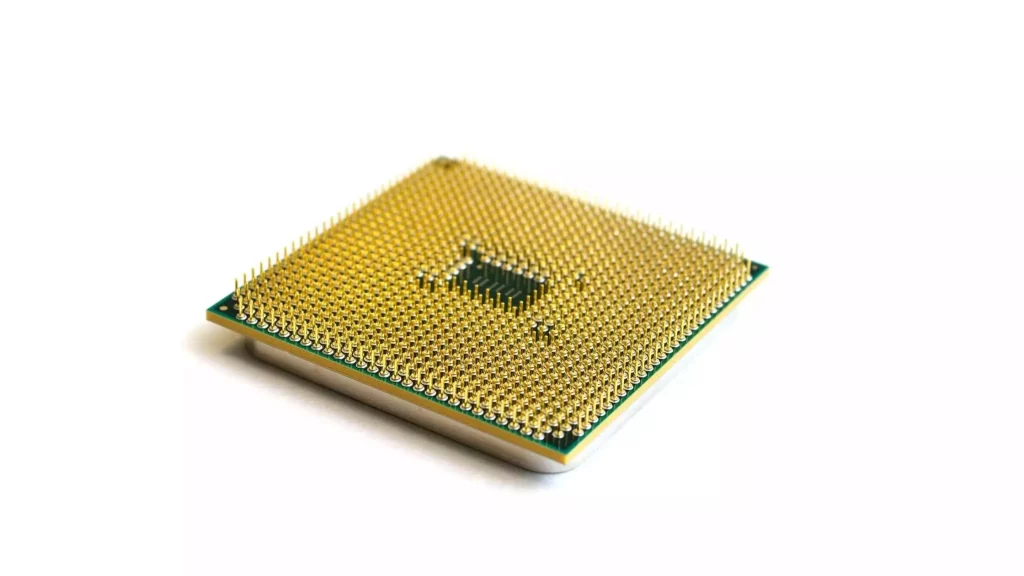
Pick the right Processor
Any processor below the 9th generation Intel Core i7 is inappropriate for Deep Learning or machine learning programs.
Higher is better because it enables faster processing; if you have the money to buy the latest 12th or 13th generation Intel Core i7, the i9, and 6th or 7th gen AMAD Ryzen 5, 7, and 9will be exceptionally sufficient and enable seamless computation.
AMD Ryzen is the latest processor manufacturer on the market and performs best when performing heavy tasks such as machine learning, video editing, Android development, and 3D modeling.
For students or all those who are engaged in coding-related tasks, AMD’s Ryzen processor will be the best CPU because it will provide tremendous power.
The price of AMD Ryzen CPU is lower than Intel, which is why it is so popular today.
Most Ryzen processors are used in gaming laptops because they are in benchmark scores or 3D mars; they can easily beat Intel Core CPUs.
If you want the best processor for machine learning and deep learning, choose the 13th generation Intel i7, i9, or the latest AMD Ryzen 7, 9.
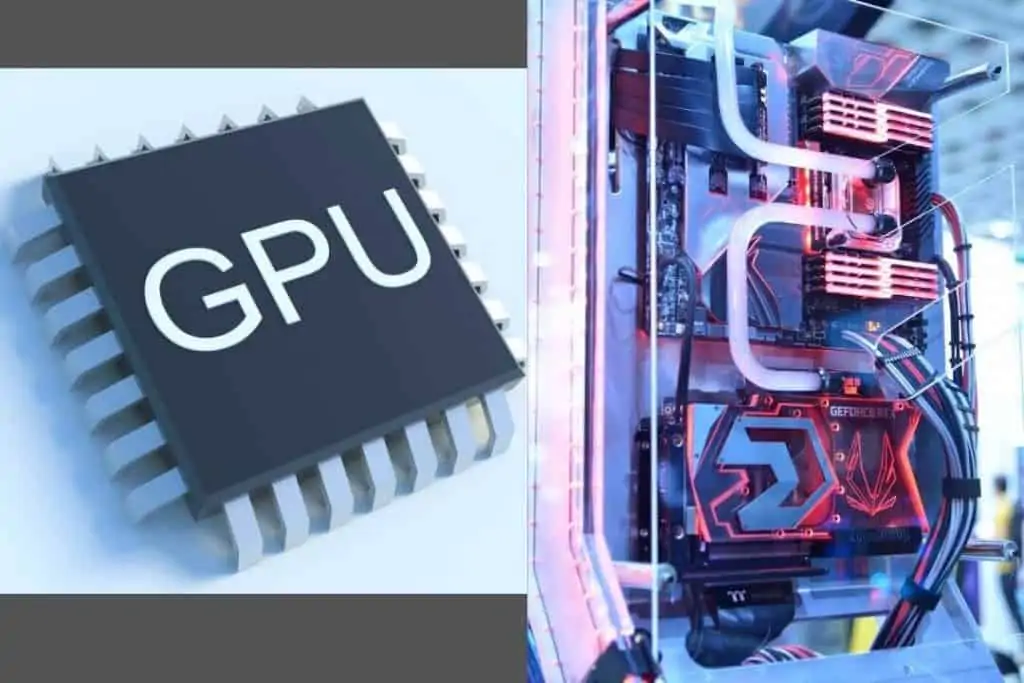
Pick the right GPU
When you train Deep Learning or machine learning models, the right graphics card is important. Even when using thousands of cores and threads, a GPU overcomes the drawbacks of running multiple cores.
Using multiple threads running simultaneously greatly reduces the hardware threats that come if you have a robust GPU to support your CPU.
This is the most important aspect of Deep learning, which is a subfield of machine learning that requires neural networks to operate and is computationally expensive. Working on images or videos requires a large number of pixels.
The GPU enables parallel processing of these matrices. Without a GPU, the process can take days or months. But with this, your best laptop for Deep learning can do a single task in hours.
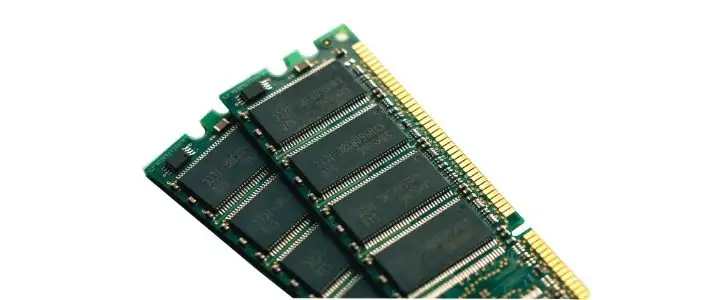
It should have more RAM
You need a large amount of RAM and the latest and fastest type of RAM you can find on the market.
The larger your RAM, the better it is, as it means that your laptop will not have to move back and forth between your software and storage to access the data.
Make sure your device has at least 16GB of RAM for Deep learning, and it would be better to have DDR4 RAM DDR5, allowing you to make the most of your device. If you can’t easily get your hands on these device devices, make sure that you can easily upgrade your RAM to your device.
Sharp and Clear Display
Working on machine learning and artificial intelligence is not easy, and you often find yourself working on a laptop for hours, day to day, month to month.
Having a display that not only provides a good resolution but is built using a quality display panel is important for the comfort of your eyes and, in the long run, for better progress and results.
Most modern displays offer a high resolution; anything 4K resolution can be great if you are working with graphics software that can handle 4K resolution Full HD will also be Good.
In addition to resolution, pay attention to brightness, gamma, sharpness, and color in general. The easiest way to measure screen quality is to pay attention to the display panel.
We recommend going for an IPS display type as it provides a great image combined with a great viewing experience and resolution.
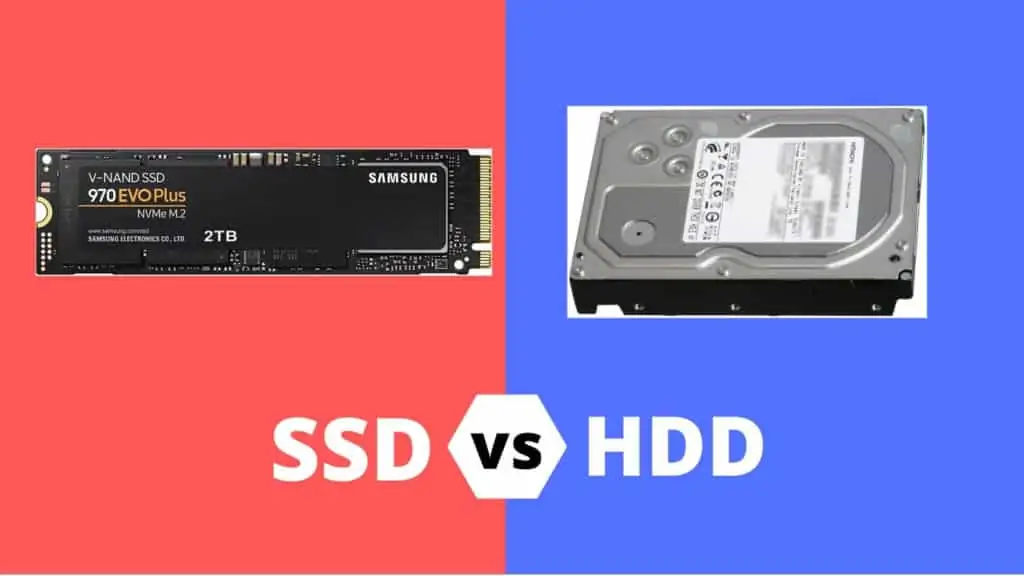
Need SSD Storage
Many data sets can reach hundreds of gigabytes for Deep learning. Even if you only keep them on the computer for a limited time while working on your algorithms, they can quickly fill your entire disk.
Because of this, I recommend that you get at least a 500GB SSD. An SSD is better than a hard drive, and many laptops will have the option of an SSD instead of a hard drive.
Also, some laptops combine solid-state drives (SSD) and HDD, which is a good compromise between size and price.
The smallest storage device on your laptop should not be less than 256 GB, and the total should not be less than 512 GB. You can also choose an external hard drive that you can use to store your data set long-term. It is not possible to keep it on a laptop because they will fill it up very quickly.
You can often upgrade SSDs to laptops themselves. If you want to go for a laptop that does not have a lot of storage, do some research to upgrade it easily.
Operating System (OS)
By any coincidence, you need a more stable operating system, and if you are used to the Windows OS that makes MacOS work smoothly, you can choose it all depends on your choice. macOS is more secure than Windows OS.
Portability
Portability and durability are two major inclusions that you should look for in a laptop. If portability is not important to you, it would be smart to build your desktop —The desktop provides a lot of power and is cheap.
Each laptop you list is easily carried with you wherever you go and withstands external pressures making it quite durable and flexible.
Battery Life
If you are buying a laptop, you want it to function as one. Battery life is an important part of any laptop. As a programmer, you should get a laptop that you can work on for a long time without the need to charge again.
This feature comes in handy when you want to go to work or places without a power supply. Take a look at the laptop’s specifications and make sure that its battery capacity is quite good.
Software Compatibility
Deep learning, machine learning, and artificial intelligence require installing essential software on a laptop or PC.
Before purchasing a laptop for deep learning, machine learning, or artificial intelligence, ensure the software is suitable.
You cannot utilize essential deep-learning tools if your laptop does not satisfy the minimal requirements.
These machine-learning software packages will make it simple to deploy machine-learning algorithms, analysis, machine translation, NLP, sentiment analysis, and so on.
Some of the top software tools for deep learning, machine learning, and artificial intelligence-
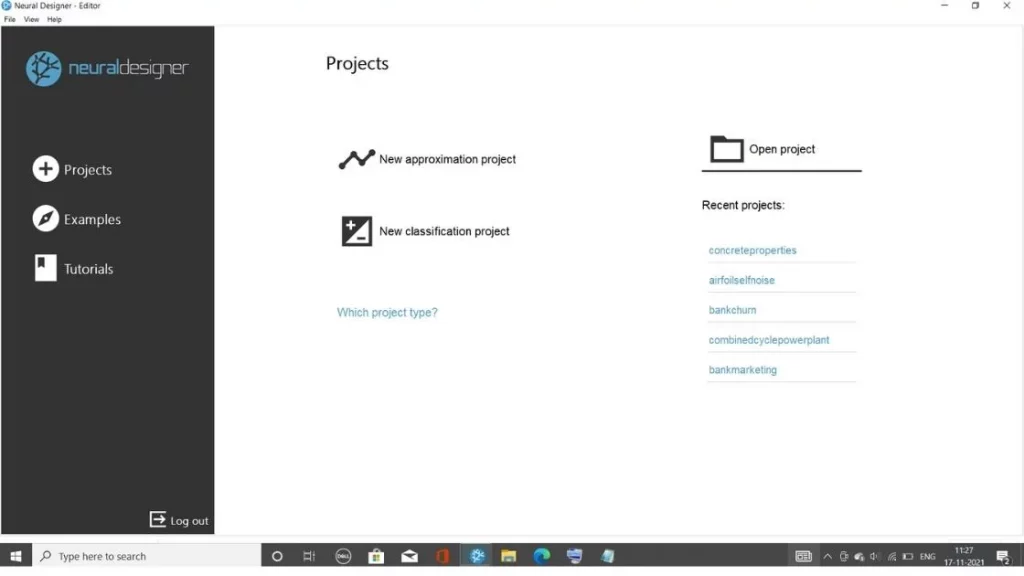
Neural Designer
In 2015, Artelnics, a prominent European start-up, created Neural Designer, which has become one of the most popular data mining applications.
Users may view reports and discover patterns in the form of charts, tables, and images using its simple graphical user interface and data visualization tools.
It employs neural networks as a mathematical model for simulating human brain activities. Furthermore, it creates a computer model that serves as the central nervous system.
Also, It is a professional tool of Machine Learning that uses neural networks to uncover unknown patterns, and complicated relationships, and predict real trends from data sets.
It is written in C++, thus it has sophisticated memory management for importing big data sets, as well as CPU and GPU optimizations for speedier calculations.
Minimum and Recommended System Requirements for Neural Designer
| Specs | Minimum | Recommended |
|---|---|---|
| CPU | Minimum Intel Pentium 4 or AMD Athlon 64 processor Apple Mac models with M | 11th gen Intel Core i5, i7 or AMD Ryzen 5, 7 64-bit quad-core |
| RAM | 4GB DDR4 | 16GB DDR4 |
| Storage | 64GB Free | 256GB Free |
| Display | FHD (1280 x 1024) | UHD (1600 x 1200) or higher recommended) with True Color |
| Graphics card | Intel Iris xe 1GB RAM or AMD | NVIDIA GeForce 1650 4GB RAM |
| OS | Microsoft Windows 8 Apple macOS 10.13.x Linux Red Hat Enterprise 7.3 Linux CentOS 7.3 | Windows 11 Professional Apple macOS 10.53.x Linux Red Hat Enterprise 7.5 Linux CentOS 7.5 |
| Peripherals | Three-button mouse | Three-button mouse |
| Old | 4 Years | 2 Years |
Ask For Conditions from the Neural Designer’s Official Site
- 100,000 data rows.
- Desktop (Windows, macOS, Linux).
- Cloud (AWS BYOL).
- Multi-core parallelization (Intel MKL).
- GPU acceleration (NVIDIA CUDA).
- Standard support.
Related: Best Laptops for Virtual Machines
Frequently Asked Questions
Q1. What is Deep Learning?
As a subset of artificial intelligence, Deep Learning is a process that is increasing in popularity and demand.
Machine learning is your device’s ability – laptop, desktop, phone, tablet, etc. – to gather large amounts of information and make predictions based on what it has learned.
Your device can read and learn from what is going on around it. It can create forecasts, enable security processes, and provide helpful information to users.
The best thing about Deep Learning or Machine Learning is that it is completely user-free. You will not have to interact or interfere with the processes of Machine Learning, and you will experience better results without your intervention.
The machine can learn and assemble independently, and all you have to do is find a device that can handle that process. ML optimizes the experience of your device and provides all the information directly to you.
Q2. Are Deep Learning, Machine Learning, and AI the same?
No Deep Learning Machine, Learning, and Artificial Intelligence are not the same, but all are connected.
Let us know What Machine Learning; Deep Learning, and AI are-
Deep Learning:
Deep learning is a subset of machine learning based on artificial neural networks. The learning process in deep learning is deep because the structure of an artificial neural network is connected with multiple inputs and outputs and a hidden layer to provide unified input data and information to the network.
What Is Machine Learning?
Machine learning is a subset of artificial intelligence that uses deep learning techniques which can improve the experience and learning process. Machine Learning converts feed data into algorithms and trains data to model, test, and solve consumer problems.
What Is Artificial Intelligent?
In John McCarthy’s view, artificial intelligence refers to computers or machines’ ability to imitate human thinking- the ability to learn from examples and experience.
Artificial intelligence includes machine learning and deep learning.
You can create computer systems and applications using machine learning and deep learning technology because they can efficiently complete transformations related to human intelligence.
Q3. What is the scope of deep learning in the future?
Deep learning technology Explorer analyzes unknown data structures and assigns inputs. This is why it is said that the score may be high in the future.
Deep learning is a popular technology in many applications in the industry, and it also adds functionality.
Many organizations and different departments are using this learning technology. The industry has contributed to its growth through data science, machine learning, and artificial intelligence.
- News aggregation and fraud detection
- Image and fingerprint recognition function
- Virtual Assistant
- Visual Identity
- Bank application
- Business trends and results
- Healthcare and personalization
- Automatic machine translation
- Medical research tools
- Pixel repair
Deep learning has always been one of data science’s most influential and widely used branches. Its value is constantly changing, and its potential is huge. This is one of the most promising career paths, with a wide range and opportunities soon.
In today’s era, the scope of an in-depth understanding of its adaptive characteristics is limitless. The subject of deep learning is not simple, and its complete capabilities have yet to be explored. But it is a powerful branch of machine learning and will soon have many scopes.
Deep learning technology will adopt a set of core standards and tool frameworks.
It is destined to be recognized and demanded by many brands and companies.
Various other image search applications, translation, resolution enhancement, and deep learning are being developed and researched to obtain the best results.
Deep learning is used to code quickly using a simplified programming framework.
It will increasingly be used in designing and constructing generative design tools.
Q4. How does the Laptop affect Deep Learning, ML, and AI?
Artificial intelligence based on deep learning is becoming increasingly popular and increasing in the medical field. It becomes challenging because the content used for medical data is unusual.
Deep learning can improve self-learning ability and make compelling explanations for using computers and learning new technologies.
In some medical and technical fields, robots are being used more. Therefore, if you have a better laptop, you will quickly and effectively perform deep learning.
Q5. Are gaming laptops good for Deep learning?
Generally, Gaming Laptops are great in case of doing heavy work. Laptops such as gaming require the highest demands of any computing activity.
Good gaming laptops are usually perfect for Deep Learning or Machine Learning.
Q6. How important is the GPU for a Deep-learning laptop?
The GPU is very important when looking for a specific laptop for ML use. Since machine learning or Deep Learning requires slightly more in-depth graphics, we always recommend that you do not compromise with an integrated graphics processor.
Instead, a dedicated graphics card is a must – and that’s why most gaming laptops are suitable for ML use.
Q7. How powerful is SSD over HDD in the case of Machine learning?
If you are not a computer geek, you can find only the letters “SSD” and “HDD” and buy any long-term storage number until it works for you: 500GB, 1TB, 2TB. About a decade and a half ago, only thin, high-end laptops had SSD data storage, which was often expensive.
SSD laptops are requested in colleges and schools, but different individuals from different regions also use this data storage for maximum productivity.
Now, what is the difference between SSD and HDD? There are several reasons to help you understand why SSD is in high demand today.
Final Words
Let our tips and buyer’s guide help you choose the best laptop for deep learning or machine learning.
Keep in mind that desktop machines may offer even more power in the future.
Laptops offer the advantage of portability, making them an excellent choice, especially for students who need to bring their work to campus.
This article aims to provide you with the knowledge needed to make an informed decision when purchasing a laptop for machine learning or intensive tasks. The laptops listed here perform admirably in their respective fields.
These are our top picks for deep learning and data science professionals.
